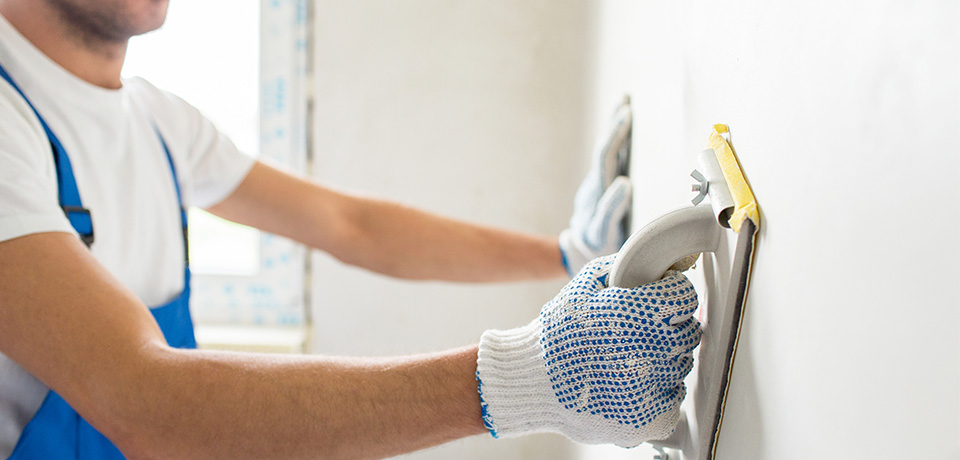Materials Checklist
- Rigid putty knife
- Flexible putty knife
- Fine-grit sanding sponge
- Spackling or patching compound
- Fiberglass mesh tape
- Drop cloth
- Cloth rags
Ensure great-looking, long-lasting results
If your walls have nail holes, cracks, nicks or flaking paint, here are a few things you need to do to properly prepare the surface so it’s smooth, dry and clean for painting.

Step 1: Scraping
For previously painted surfaces, begin by scraping off any loose, bubbling or flaking paint with a rigid putty knife and then smooth the area out with a fine-grit sanding sponge.
Be safe! Wear a dust mask whenever scraping off paint or sanding down surfaces.
Step 2: Repairing Small Holes
Fill any small holes and cracks with a spackling or patching compound. A flexible putty knife is best for working it in. Just swipe on the compound and gently remove as much excess as possible, right away. This will make your job less messy when it comes to sanding.
Give the spackle a few hours to dry before smoothing it out with a fine-grit sanding sponge.

Step 3: Larger Repairs
For larger holes or dents, use a self-adhesive fiberglass mesh tape stretched across the area you’re repairing.
Use a flexible putty knife to push spackling or patching compound into the hole, through and around the mesh.
Gently remove as much excess compound as possible while it is still wet.
Allow your compound to dry overnight and then smooth the surface with a fine-grit sandpaper or a sanding sponge.
For easier cleanup or to protect your furnishings, lay down a drop cloth to catch the spackle dust.
After drying, if your patch isn’t perfectly smooth, apply a second coat of your compound, let dry and repeat the same steps for sanding.
Step 4: Sanding Trim
For glossy painted surfaces like your window and door trim, lightly sand to a dull finish and then wipe clean with a slightly damp cloth. This will help your new coat of paint to adhere better.

